 |
|
|
plants
text index | photo
index
|
| coastal plants |
| Rubber
tree Hevea brasiliensis Family Euphorbiaceae updated Oct 09 Where seen? Rubber trees are commonly seen in many of our wild places. These are often abandoned rubber plantations, although some may have grown wild from dispersed seeds. You can tell they are rubber trees as they are often the same size and planted in rows, although the regenerating forest around them may obscure this. Our rubber trees originally came from the Amazon in Brazil. Their introduction and mass cultivation in Malaya is attributed to Sir Henry Nicholas Ridley aka 'Mad Ridley' while he was Director of the Singapore Botanic Gardens. The latex of these trees supported vast industries for some time until synthetic rubber was invented. The history of rubber is long and colourful, involving purported bio-piracy, long periods of scientific experiments and no doubt plenty of intrigues. The first rubber tree was successfully transplanted in Singapore Botanic Gardens in 1877, from seedlings taken from Brazil to the Kew Gardens in the UK. The tree is originally called the Para rubber tree. There are 12 species in Brazil, only H. brasiliensis was widely introduced to Malaya. Features: Tall tree (to 20m). Compound leaf thin, made up of three leaflets, arranged in a spiral. These wither brown, red or yellow after a dry season. Young leaves are purple bronze. Small white or pale flowers in a spray, said to be fragrant. They are insect pollinated. Fruit a capsule made up of three lobes, each with one large seed. The capsule explodes when ripe and can send the seeds shooting out a long distance. Don't keep unripe capsules at home as they may eventually explode and the whizzing seeds may hurt people and damage your stuff. Apparently wild boar love to eat rubber seeds, well at least the tame wild boar at the Ubin Orchid Farm, according to the Ubin blog. Human uses: Burkill has a long account of the history of the tree, how wild trees were tapped in the Amazon, its introduction to cultivation in Malaya and the experiments done to test the different ways to tap the tree. The oily seeds are fed to livestock and eaten by people in some places but only after special preparation. Eating too much and ill-prepared seeds can make you ill. The wood of old rubber trees are sometimes made into charcoal. Heritage Trees: There are two rubber trees with Heritage Tree status: One is at Japanese Cemetery Park, Chuan Hoe Avenue 89 and another at the Singapore Botanic Gardens, behind the Green Pavilion. |
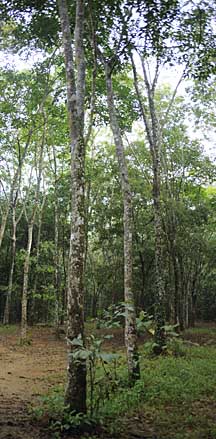 Pulau Ubin, Oct 09 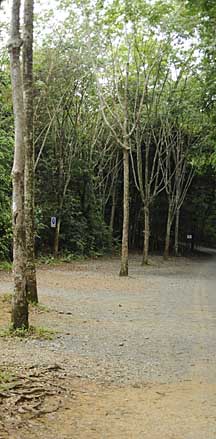 Next to the path to Chek Jawa. Pulau Ubin, Oct 09 |
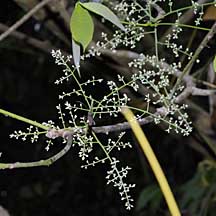 Pulau Ubin, Aug 09 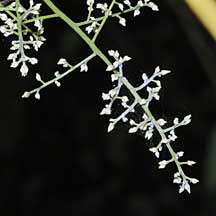 |
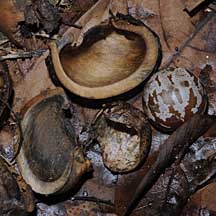 Pulau Ubin, Oct 09 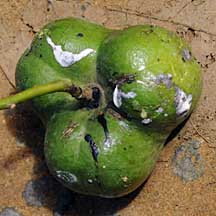 Pulau Ubin, Dec 09 |
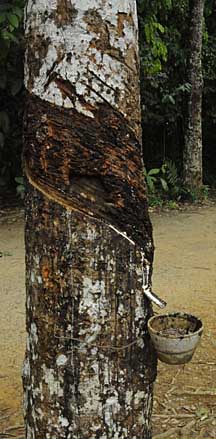 Tapping rubber latex. Pulau Ubin, Oct 09 |
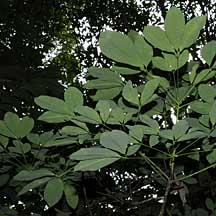 Pulau Ubin, Nov 09 |
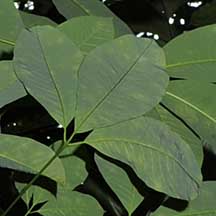 |
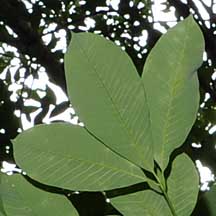 |
|
Links
References
|
|
|